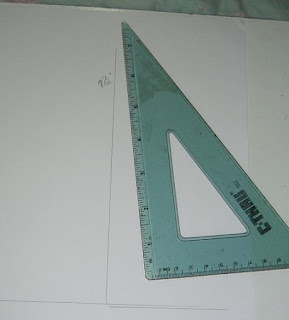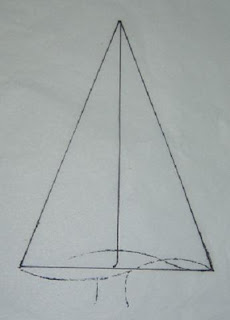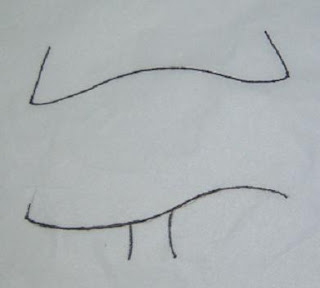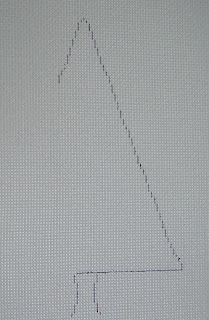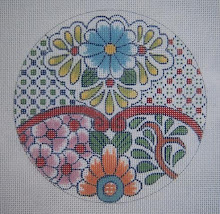 At this point, the project is beginning to be exciting, as new "happy accidents" occur. I have the flat paper sketches and the cone appearance of these on the other blog, but wanted to show what I discovered late last night!
At this point, the project is beginning to be exciting, as new "happy accidents" occur. I have the flat paper sketches and the cone appearance of these on the other blog, but wanted to show what I discovered late last night!By moving the orientation of this tree on canvas, I can use either my diagonal laces and trims or the horizontal laces and jeweled chains, etc. to make the spiral around the topiary.
The first photo shows the paper cone I drew with the lines parallel to the straight lines of the pattern. Incredible, I think, how it looks like spirals - which gave me lots and lots of new ideas!

By putting the top of the tree this way on the canvas, the lines are at 45 degree angles, so will accomodate easily my diagonal laces and "jeweled" chains, etc.
By turning it so that the straight sides are on the threads of the canvas (it also takes less canvas this way), I can do the horizontal/vertical laces and trims - and some of my RIBBONS!! also candy canes. Strings of candy corn, etc. - lots and lots of things for decorating a table top for a special occassion.


(No matter which way the pattern is oriented on the canvas, it will still finish as spirals.)
The second picture shows an old project with my "cotton lace," which is a horizontal lace.

The leaves are on one of my very first pieces in crazy quilt long ago, where I worked out leaves as a seam treatment - they are worked on the horizontal or vertical, and are great with French knot "berries."
At this point, I'm just wishing I could stitch as rapidly as I think. However, there are days that I can't think at all, so am grateful for small, mindless pieces to stitch to keep me going.









